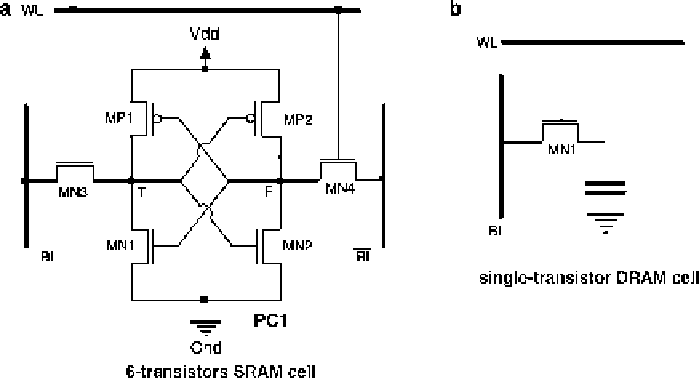Hardware Reference
In-Depth Information
Fig. 6.3
(
a
)SRAM,and(
b
) DRAM device level structural model
due to both their peculiar goals and the amount of available details. Several types
of users can be considered in the supply chain of semiconductor memories: the
designer, the test engineer, the device manufacturer, the system integrator, and
the end-users.
Faults and defects
: defines the classes of failure mechanisms as well as physical
defects that may occur in a given memory. They will be deeply analyzed in the
next sections.
6.3
Models for Structures, Behaviors, and Architectures
Dealing with the multidimensional space presented in the previous section is always
a complex and hard to manage task. Appropriate sub-spaces, or views, are therefore
used to reduce the complexity of the modeling process.
Van de Goor
(
1991
)pro-
from the external levels to the internal ones, the amount of information about the ac-
tual implementation of the memory decreases while the information about the way
the system is expected to work increases. This sub-space has the main disadvantage
of mixing, at the same time, abstraction levels and representation domains.
Here we prefer to introduce a different sub-space that explicitly considers the
dimensions. Figure
6.5
shows this sub-space where for the sake of simplicity only
the most representative representation domains are included. Based on this model, in

